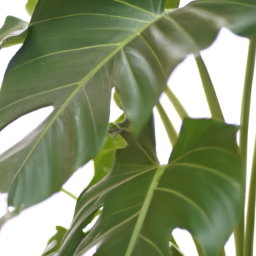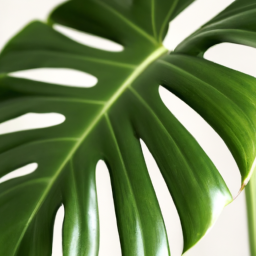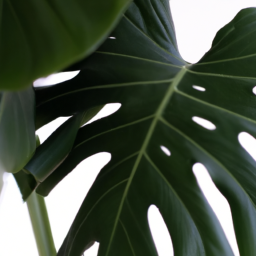
Are you looking to bring a touch of the tropics into your home? Look no further! In this blog post, we will explore the various types of tropical house plants that can thrive indoors and add a lush, vibrant atmosphere to your living space. Whether you have a green thumb or are new to plant care, there is a tropical house plant out there for everyone. From easy-to-care-for options to more exotic varieties, we will cover a wide range of plants that can thrive in the cozy confines of your home. So, let’s dive in and discover the beauty and benefits of incorporating types of tropical house plants into your indoor oasis.
Common Types of Tropical House Plants
Welcome to our guide on common types of tropical house plants! If you’re looking to bring a touch of the tropics into your home, you’ve come to the right place. Tropical house plants are not only beautiful to look at, but they also help purify the air and create a relaxing atmosphere. In this article, we’ll explore some popular varieties of tropical house plants that are perfect for indoor spaces.
1. Monstera Deliciosa
Overview
The Monstera Deliciosa, also known as the Swiss Cheese Plant, is a popular choice for tropical house plant enthusiasts. This plant features large, glossy green leaves that have unique splits and holes, giving it a distinctive appearance. It is relatively easy to care for and can thrive in a variety of indoor conditions.
Care Tips
To care for your Monstera Deliciosa, place it in a bright, indirect light spot and water it regularly, allowing the soil to dry out between waterings. You can also mist the leaves occasionally to increase humidity. Keep an eye out for yellowing leaves, as this may indicate overwatering.
Additionally, you can fertilize your Monstera Deliciosa every few months during the growing season to promote healthy growth. Prune any yellow or damaged leaves to keep the plant looking its best.
Propagation
If you want to propagate your Monstera Deliciosa, you can do so by taking stem cuttings and rooting them in water or soil. Make sure to choose a healthy stem with at least one node, and place it in a warm, humid environment to encourage root growth. Once roots have developed, you can transplant the cutting into a pot with well-draining soil.
2. Bird of Paradise
Overview
The Bird of Paradise plant is known for its striking, banana-like leaves and vibrant orange and blue flowers that resemble a bird in flight. This tropical plant adds a touch of exotic elegance to any indoor space and can grow quite large if given enough space to thrive.
Care Tips
For optimal growth, place your Bird of Paradise in a spot with bright, indirect light and water it regularly, allowing the soil to dry out slightly between waterings. This plant prefers high humidity, so misting the leaves or using a humidifier can help create the ideal environment.
During the growing season, you can fertilize your Bird of Paradise every few weeks to promote healthy growth and flowering. Prune any dead or yellowing leaves to encourage new growth and keep the plant looking tidy.
Propagation
To propagate your Bird of Paradise, you can divide the plant at the root ball or take stem cuttings and root them in water or soil. Make sure to choose a healthy, mature plant for division or cutting, and provide the new plant with the same care as the parent plant to ensure successful growth.
3. Fiddle Leaf Fig
Overview
The Fiddle Leaf Fig is a popular tropical house plant known for its large, violin-shaped leaves and striking appearance. This plant can grow quite tall if given the right conditions and is a favorite among interior designers for its dramatic effect in any room.
Care Tips
To care for your Fiddle Leaf Fig, place it in a spot with bright, indirect light and water it regularly, allowing the soil to dry out slightly between waterings. This plant prefers a warm, humid environment, so misting the leaves or using a humidifier can help maintain optimal conditions.
During the growing season, you can fertilize your Fiddle Leaf Fig every few weeks to promote healthy growth and lush foliage. Prune any leggy or yellowing branches to encourage new growth and maintain the plant’s shape and health.
Propagation
If you want to propagate your Fiddle Leaf Fig, you can take stem cuttings and root them in water or soil. Make sure to choose a healthy stem with at least one node, and place it in a warm, humid environment to encourage root growth. Once roots have developed, you can transplant the cutting into a pot with well-draining soil.

Introduction
Are you looking to bring some greenery into your home? Tropical house plants are a great option for beginners, as they are easy to care for and can thrive in indoor environments. In this guide, we will explore some of the best tropical house plants for beginners, so you can start your indoor garden with confidence.
Peace Lily
The Peace Lily is a popular choice for beginners, as it is low-maintenance and can thrive in low light conditions. This plant features glossy green leaves and white flowers that bloom throughout the year. To care for a Peace Lily, simply water it when the soil feels dry to the touch and place it in indirect sunlight.
One important thing to note about Peace Lilies is that they are toxic to pets, so it’s best to keep them out of reach of furry friends. With proper care, a Peace Lily can grow to be a beautiful addition to any indoor space.
In addition to their aesthetic appeal, Peace Lilies are also known for their air-purifying properties, making them a great choice for improving indoor air quality. If you’re looking for a low-maintenance tropical house plant that offers both beauty and function, the Peace Lily is an excellent option.
Spider Plant
The Spider Plant is another great choice for beginners, as it is easy to care for and can thrive in a variety of conditions. This plant features long, arching leaves that are typically green with white stripes. Spider Plants are known for their air-purifying abilities and can help to remove toxins from indoor spaces.
To care for a Spider Plant, simply water it when the soil feels dry to the touch and place it in indirect sunlight. Spider Plants are also known for their ability to produce “babies” or offshoots, which can be propagated to create new plants. This makes them a fun and rewarding option for beginner plant enthusiasts.
Spider Plants are non-toxic to pets, making them a safe choice for households with furry friends. With their unique appearance and easy care requirements, Spider Plants are a versatile option for adding greenery to any indoor space.
ZZ Plant
The ZZ Plant is a hardy and low-maintenance tropical house plant that is perfect for beginners. This plant features glossy, dark green leaves that add a touch of elegance to any indoor space. ZZ Plants are known for their ability to thrive in low light conditions and can go for long periods without water.
To care for a ZZ Plant, simply water it sparingly when the soil feels dry to the touch and place it in indirect sunlight. ZZ Plants are also known for their air-purifying properties, making them a great choice for improving indoor air quality. With their resilience and striking appearance, ZZ Plants are a popular choice for beginner plant enthusiasts.
One thing to keep in mind when caring for a ZZ Plant is to avoid overwatering, as this can lead to root rot. With proper care and attention, a ZZ Plant can thrive and grow to be a beautiful addition to any indoor garden.

Unique Varieties of Tropical House Plants
Monstera Deliciosa
Overview
One of the most popular tropical house plants is the Monstera Deliciosa, also known as the Swiss Cheese Plant. This plant is known for its large, glossy green leaves that have unique splits and holes, giving it a unique and exotic look. The Monstera Deliciosa is relatively easy to care for and can thrive in a variety of indoor environments.
Care Tips
To care for your Monstera Deliciosa, make sure to place it in a well-lit area with indirect sunlight. Water the plant regularly, allowing the top inch of soil to dry out between waterings. You can also mist the leaves occasionally to increase humidity and prevent dust buildup. Fertilize the plant monthly during the growing season to promote healthy growth.
Propagation
You can propagate your Monstera Deliciosa by taking stem cuttings with a node and placing them in water until roots develop. Once the roots are established, you can plant the cutting in a pot with well-draining soil. Make sure to keep the soil consistently moist until the plant is established.
Bird of Paradise
Overview
The Bird of Paradise plant is another stunning tropical house plant that is known for its large, banana-like leaves and vibrant orange and blue flowers. This plant can add a touch of tropical elegance to any indoor space and is relatively low-maintenance, making it a popular choice for beginner plant enthusiasts.
Care Tips
Place your Bird of Paradise plant in a bright, sunny spot with indirect sunlight. Water the plant regularly, allowing the top inch of soil to dry out between waterings. You can also mist the leaves occasionally to increase humidity and prevent dust buildup. Fertilize the plant every 2-4 weeks during the growing season to promote healthy growth and flowering.
Propagation
You can propagate your Bird of Paradise plant by dividing the rhizomes or by collecting and planting the seeds. Division is the most common method and involves separating the plant into smaller sections with roots attached. Plant each section in a pot with well-draining soil and water thoroughly. Keep the soil consistently moist until new growth appears.
ZZ Plant
Overview
The ZZ Plant, also known as Zamioculcas Zamiifolia, is a popular tropical house plant that is prized for its glossy, dark green leaves and low-maintenance nature. This plant is extremely resilient and can thrive in low light conditions, making it an ideal choice for offices or rooms with minimal natural light.
Care Tips
Place your ZZ Plant in a low to bright indirect light location. Water the plant sparingly, allowing the soil to dry out completely between waterings. This plant is prone to root rot, so it is important not to overwater. Fertilize the plant every 2-3 months during the growing season to promote healthy growth.
Propagation
You can propagate your ZZ Plant by dividing the rhizomes or by leaf cuttings. To propagate by division, simply separate the plant into smaller sections with roots attached and plant them in pots with well-draining soil. For leaf cuttings, place a healthy leaf in a pot of soil and water lightly. New growth should appear within a few weeks.
Crisp Recap
Tropical house plants are a great way to bring a touch of the exotic into your home. There are many different types of tropical house plants to choose from, each with its own unique characteristics and care requirements. One popular type of tropical house plant is the Monstera deliciosa, also known as the Swiss cheese plant. This plant has large, glossy leaves with distinctive splits and holes, making it a striking addition to any room.
Another popular tropical house plant is the Fiddle Leaf Fig, known for its large, violin-shaped leaves. This plant requires bright, indirect light and regular watering to thrive. If you’re looking for a low-maintenance option, consider a Snake Plant, which is known for its ability to thrive in low light and tolerate neglect. With so many different types of tropical house plants available, there’s sure to be one that fits your style and care preferences.
Frequently Asked Questions from our readers:
Q1: What are some popular types of tropical house plants?
A1: Some popular types of tropical house plants include the Monstera deliciosa, Bird of Paradise, Fiddle Leaf Fig, and Peace Lily.
Q2: What are some low-maintenance tropical house plants?
A2: Low-maintenance tropical house plants include the Snake Plant, ZZ Plant, and Spider Plant, which require minimal care and can thrive in various conditions.
Q3: Can tropical house plants thrive in low light conditions?
A3: Yes, some tropical house plants like the Cast Iron Plant, Parlor Palm, and Chinese Evergreen can thrive in low light conditions, making them suitable for indoor spaces with limited sunlight.
Q4: How often should I water my tropical house plants?
A4: The watering frequency for tropical house plants varies depending on the plant type and environmental conditions. It is important to check the soil moisture level before watering and adjust the watering schedule accordingly.
Q5: Are tropical house plants safe for pets?
A5: While many tropical house plants are safe for pets, some can be toxic if ingested. It is important to research the toxicity of specific plants and keep them out of reach of pets to ensure their safety.
Dr. Olivia Green is a botanist with over two decades of experience in indoor plant cultivation. She holds a Ph.D. in Plant Biology and has dedicated her career to researching plant behavior in controlled environments. Dr. Green is passionate about helping plant enthusiasts master the art of indoor gardening through her extensive knowledge and practical insights.


